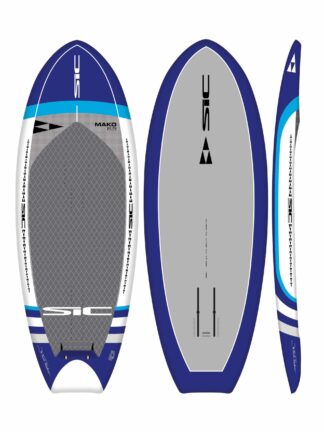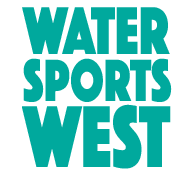Wingsurfing is a new sport that blends a variety of different watersports. It has a unique feeling and is fun! We recently started wingsurfing here at Watersports West and want to help you get into this new sport. Here are a few topics this blog post will cover:
- Gear needed
- Difficulty in learning
- Conditions needed
Gear Needed For Wingsurfing
Board
If you’ve seen wingsurfing, most people are using boards that have a hydrofoil attached below them. The reason for this is to get the rider upwind more efficiently. Other boards have the potential to work, but the conditions need to be appropriate for them. For example, kiteboards and surfboards could work, but the wind needs to be at least 20 kts and even then it is still difficult to ride upwind. If you’ve never sailed before, an important aspect to windsports is the ability to go upwind. The number one rule of sailing is that if you don’t know where you’re going, you’re going downwind. Wingsurfing is no different, the rider want to go out and come back to the point where they started
The ideal board is a short and buoyant board. The buoyancy is critical to the ease or difficultly of learning how to wingsurf. A good rule of thumb is to take your weight in kilograms, and add 15. That is the number of liters your board should have. A shorter board, or a board with less surface on the water is also ideal because it is less likely to suction to the water when coming up on the foilboard. Boards with less volume work but are more difficult to balance on. Boards with more surface area on the water work but they are more difficult to get out of the water when foilboarding.
Here is our recommended board for learning how to wingsurf.
-
Sale Product on sale
 SIC Mako 6’5 SUP Foil
SIC Mako 6’5 SUP Foil$1,749.99$1,599.00
Wing
If you’re going to wingsurf, you’re going to need a wing! Since it is a new sport, manufacturers only recently started coming up with a variety of wing sizes. Wing sizes are important because variables change such as wind strength and rider weight. There is a combination of factors to decide on when searching for the right sized wing. If you’re looking for the appropriate sized wing for our area based on your weight, call us at the shop. Keep in mind, a lot of the Youtube videos seen of wingsurfing are in strong wind areas like Hawaii.
Foil
The foil is the equipment that goes underneath the board. This is what makes the board go upwind more efficiently than boards with a traditional fin or daggerboard. The foil also rises the board above the water to provide an effortless glide. The wings that are underneath the water operates like an airplane, it has aerodynamic properties. These aerodynamic properties are what dictate the performance characteristics of the foil. A general rule of thumb is that foils with more surface area provide more lift, which makes them more stable. Another benefit of foils with more surface area is that riders can ride on the foil at a slower speed. Here is one of the foils we recommend from a beginner to an advanced level of riding for wingsurfing.
Difficulty to Learn
Learning how to wingsurf definitely is more difficult than it looks. But having background knowledge in windsports, surfing and foilboarding will expedite the learning curve. You 100% want to be on the appropriate gear for the conditions and your body weight to learn. Learning how to wingsurf can vary from an hour to weeks. Here is a good series of learning how to wingsurf that Cabrinha did.
Conditions Needed
As you get better and more experienced, you can wingsurf in lighter winds such as 10-13 kts. When learning how to wingsurf, you want at least 14 kts to be powered enough to get on foil or to ride upwind. Just like any other windsport, you want a wind direction that will blow you back to the beach. The ideal wind directions are cross-shore, side onshore and onshore winds. This is so that in case something happens, you get blown back to the beach.
When learning how to wingsurf, you want flat water. Some of the best flat water with deep spots are at the skyway bridge, either the east or west side depending on wind direction.
